Engagement Ring - In Progress
Setting
Stone
Limited Time! Purchase any Engagement Ring and Receive a $250 Gift Card & Premier VIP Bundle.
We guarantee that every single purchase directly impacts one person's life by giving them access to clean water.
Alexandrite is a gemstone in the family group “chrysoberyl” that changes color in different lighting. When outside in daylight, an Alexandrite stone is a green or greenish-Blue. But inside, under warm lightbulbs or by candlelight, it is a purplish-Red. This leads some to refer to it as an “emerald by day, ruby by night.”
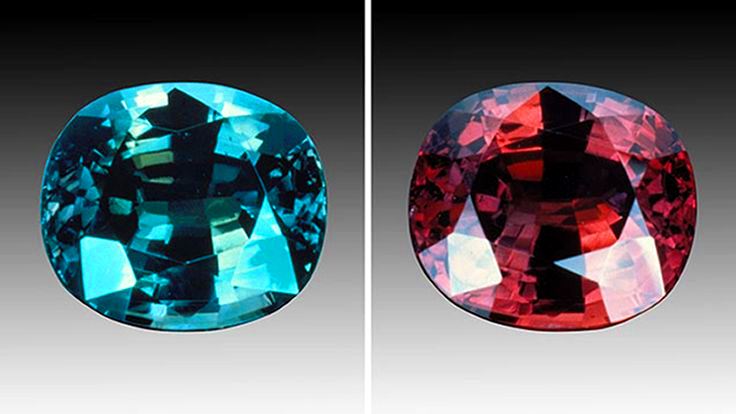
Emerald-green Alexandrite compared to Ruby-red Alexandrite. (Photo by:GIA)
Like all colored gemstones, the most important factor is color. In color-change gems, this also means how completely the stone changes from one color to another!
A top quality natural Alexandrite will change fully from Green to Red under different light sources. There will be no hints of green in the red, no hints of red in the green. The gem will appear to magically, fully transform simply by turning on a light. Natural stones with this full color change are exceedingly rare and sought after. Couples should be aware that lower quality natural gems look more like a water color painting, with some purple spilling over into the green, and vice versa.
Lab-created Alexandrite has the same hardness, color change, and chemical composition as its natural namesake. In terms of color, a Lab stone’s green hue tends to lean more blueish than the Natural version. Its red hue also tends to lean more purplish. True Lab-created stones (as compared with simulants, see more below) have full, spectacular color change.
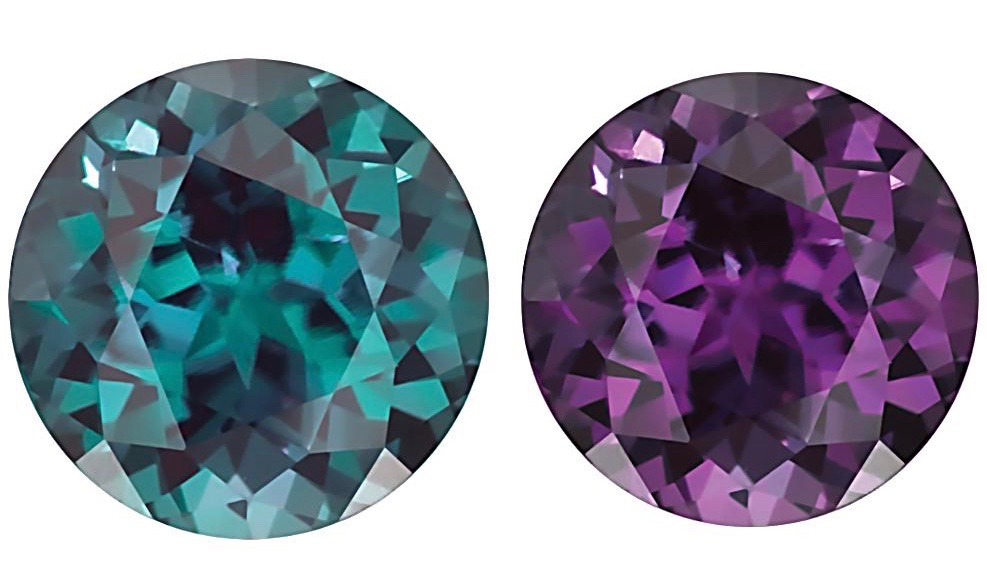
Lab Created Alexandrite in Fluorescent lighting (left) and incandescent lighting (right).
There are a ton of “simulants” out there. What we mean by a “simulant” is a gem that people call Alex, but it is NOT an Alexandrite stone. Natural or Lab. This is important because simulants either don’t change color or change to the wrong color. Some are even the wrong color to begin with. Most simulated stones are also not nearly as durable. Due to Alex’s mystical lure, simulants have been made since the 1800’s! So, when looking for an Alexandrite engagement ring, know that just because it’s antique, doesn’t mean it’s real. Always buy from a source that has actually tested and examined the stone.
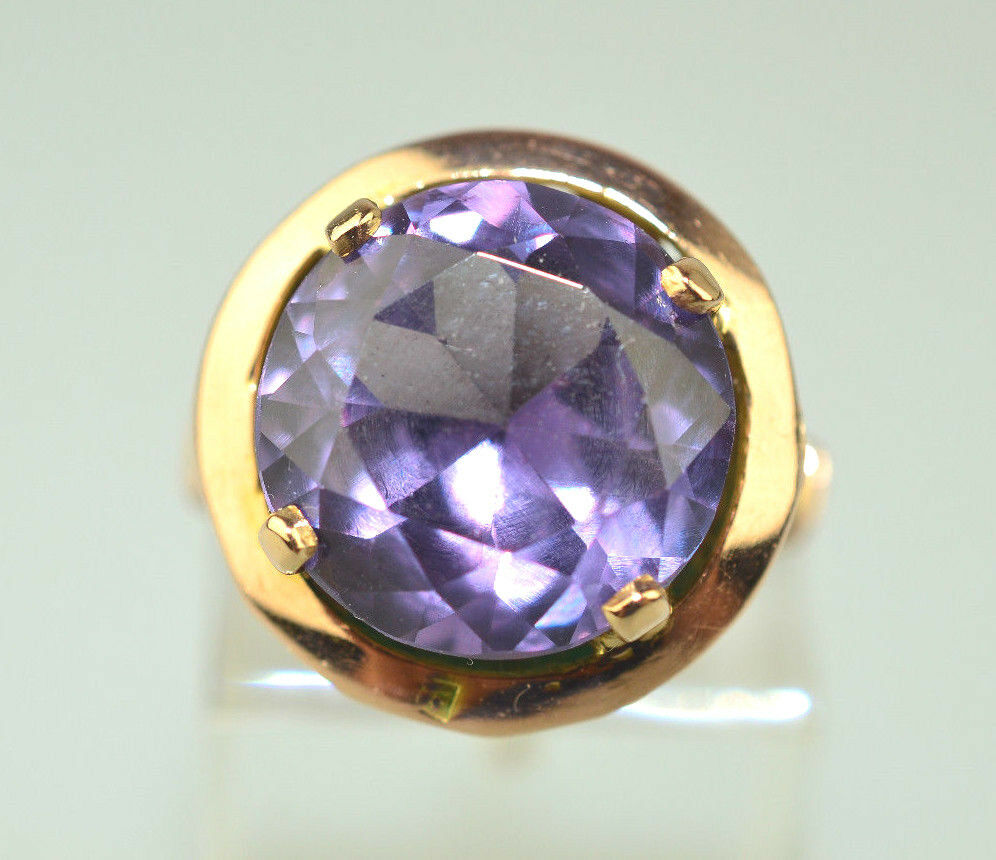
A ring with a simulated round Alexandrite stone.
Yes! Natural gems are exceedingly rare. More rare than diamonds, actually. This is because the elements needed to form it do not regularly occur together here on Earth. As a result, there are only a few Natural Alexandrite deposits in the whole world! This also means that there is a real probability that these deposits will be exhausted at some point. Russian gems have already been exhausted. In other words, there will likely come a time when this gem is not mined anymore. As you would assume, that makes gem quality stones intensely rare. In fact, many jewelers have never even seen a Natural Alex. This spectacular rarity makes an Alexandrite engagement ring a truly once-in-a-lifetime gift indeed.
There’s always a way of getting what you want at a price you can afford! Couples can include the color-change stone in their engagement ring in several ways. Because of its scarcity, gem quality Natural Alex commands high prices. So, many couples opt for a smaller Natural center stone or include small Natural side stones in order to make Alexandrite affordable. Another great option is Lab Alexandrite, which, due to being made by man, is much more reasonable.
| Carat Weight | AAA Natural Alex | Lab Alex |
| .10-.20ct | $300-$1,000 | $220-$300 |
| 1.00ct | $9,000-$15,000 | $880 |
| 2.00ct | $20,000-$40,000 | $1,480 |
Couples choosing a Lab Alexandrite should first ensure their jeweler is selling true Lab Alexandrite and not a simulant. Then, as Lab Created Alex is formed in perfect color change and clarity, all you have to do is pick a shape, size, and setting!
Couples choosing Lab stones have greater options when it comes to shape (cut) and size (carat weight). In other words, Lab Alex comes in heavier carat weight than Natural Alex, as well as in shapes not often faceted in natural stones (such as round and princess cut). Couples can therefore choose a gem that looks more similar to a natural stone, such as a 1.0 carat oval, or go big with a 4.0 ct cushion! Options are endless.
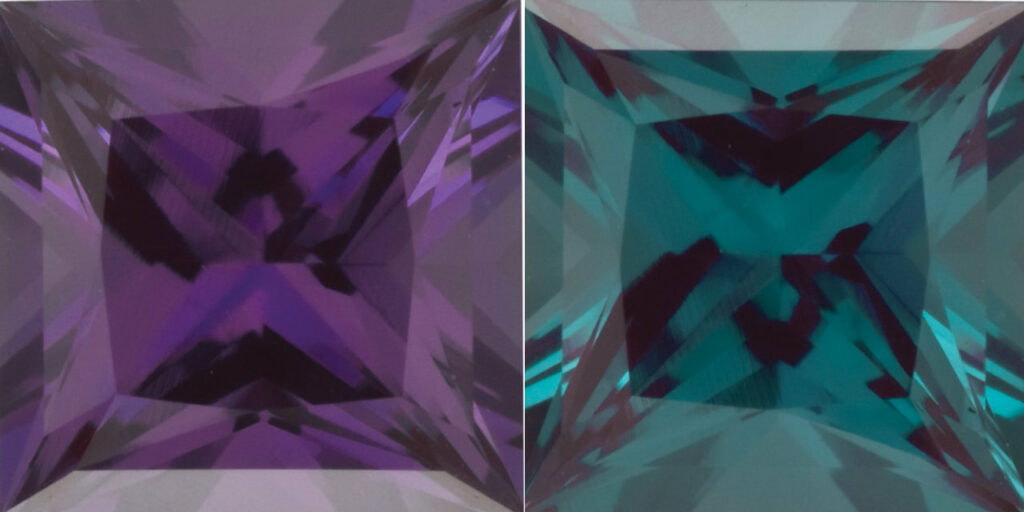
6.5mm Square Princess-cut Lab Created Alexandrite. (Photo by: Stuller)
Couples choosing a Natural Alexandrite engagement ring center stone should consider color and color change, clarity, size and shape, clarity, and certification. Let’s talk shop!
Color and color change are the most important aspects of your Alexandrite stone. Fine quality Natural gems change from a full Green or blueish-Green to a full Red or purplish-Red. How fully your Alex changes color is a huge factor in its value. The color change quality scale has three options: “weak”, “moderate”, and “strong.” The finest stones have strong color change. In other words, if a stone exhibits color change in about 85% of its body in different lighting, it is a top “strong” quality. Moderate color change shows around 50% color change. Weak color change is only slightly noticeable. Weak and moderate color change Alexandrite may appear more like watercolor paintings, with colors bleeding through in any light.
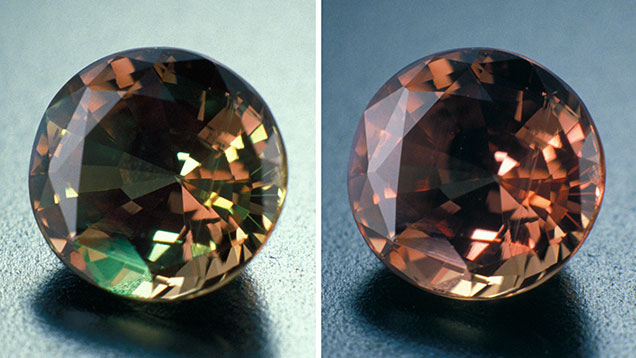
Example of weak color change in Alexandrite. (Photo by:GIA)
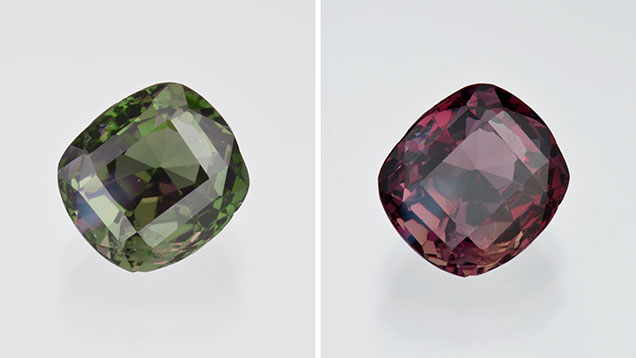
Strong color change – fit for an Alexandrite engagement ring! (Photo by: GIA)
In addition to color change, Alexandrite is also graded by the quality of both its colors. However, a gem’s main color isn’t only where it sits on the rainbow. How light or dark the stone is also contributes to its beauty, as does the intensity of that color.
PRO TIP! Grading reports often list only the hues it changes to and from. For example, a report may only list “blueish Green to pinkish Purple.” But what if the stone is so dark it is almost black? It can still technically be called “blueish Green.” Was that what you had in mind? Not likely.
Here’s your handy trick to getting the colors you really want. There are three categories to gemstone “color”: hue, tone, and saturation.
So, in Alexandrite, demand the following for the best color:
Ensure hues of Green or blueish-Green Red or purplish-Red. Since Alexandrite simply means “color change chrysoberyl,” gemologists sometimes classify other color changes (like yellow to green) as Alex, too. You want main hues of Green and Red.
Only consider gems that are “medium,” “medium-light,” or “medium-dark.” Anything else will be too light or too dark to really see the color change. And that’s a waste of money!
Top quality Alex is “vivid.” However, these gems are exceedingly rare. Couples looking for the best value should look for “strong” or “moderately strong” saturation. These gems do not show noticeable grey or brown and are priced more reasonably than vivid stones.
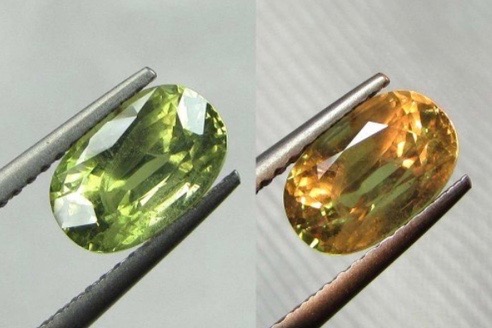
Example of low-saturation, brownish-Red Alexandrite. (Photo by: Indiamart)
Alexandrite is a “Type 2” gemstone, which means gem experts expect them to have some internal markings called “inclusions.” That said, Type 2 gemstones also regularly occur in “eye clean” stones, meaning gems are available in which the inclusions are not noticeable to the naked eye. As with all gemstones, those which are eye clean are more valuable than those with eye visible inclusions. Couples choosing an Alexandrite engagement ring should opt for an eye clean stone, or one in which the inclusions are not distracting to the beauty of the gem. This is known as “slightly included.” An Alexandrite stone that is more heavily included should be avoided as the inclusions will detract from the gem’s beauty.
The cut of a gem is its shape, as well as how well it is faceted. Natural Alex does not often occur in large crystals. As a result, gems are typically cut in the shape of the crystal (ovals, cushions, and emeralds) to retain the most weight possible. Most gems are smaller than one carat.
Faceting to retain weight is a blessing and a curse. In other words, it’s great to get a larger stone, but they often lack fine cut quality. “Windows” occur in shallow stones, when the center of the gem looks a light colored pool which shows the ring setting beneath. “Facet asymmetry” is when facets are cut haphazardly instead of as mirror images from left to right. Every couple’s tolerance for cut quality will vary. Some will be alright with certain asymmetry in their stones, others will want a more perfectly cut gem. Feel free to ask our gemologist to help you select the right Alex for you!
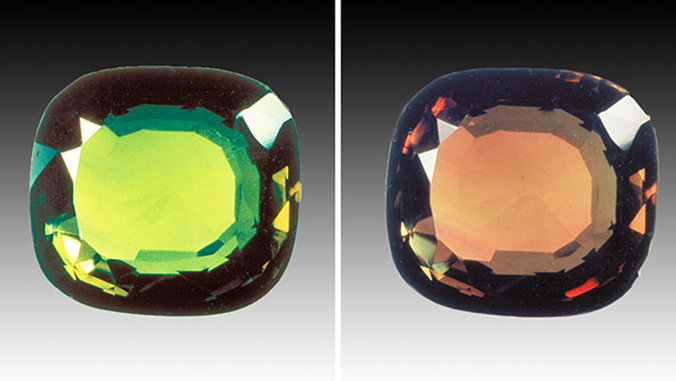
Example of windowing in Alexandrite. (Photo by: GIA)
Because of its rarity, and the immense amount of simulated Alex out there, Do Amore suggests purchasing a certified stone for your engagement ring. Certification ensures you are getting a Natural Alexandrite. Certification also provides you with an independent opinion of the gem’s quality, which is highly important in insuring such a rare gem. There are multiple gem labs offering certification. GIA is the most well known and well respected.
Couples who want a more affordable Natural Alexandrite engagement ring can opt to add small natural side-stones to a Diamond center. I made a Diamond engagement ring with natural side-stones (much like our Jemma ring) for my sister-in-law!
Because of its unique color-change properties, Natural Alex looks great in all metal colors. As it is often smaller in size, a Natural Alexandrite center stone looks great in settings which make it look a little larger, such as bezel and halo rings. A few of our favorite Natural Alexandrite engagement rings are Callan, Victoria, and Elle.
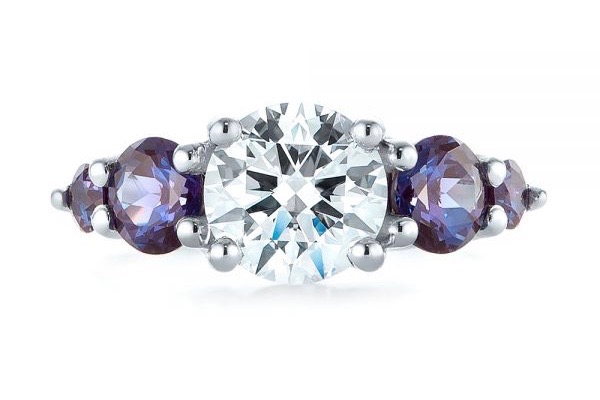
Diamond and Alexandrite engagement ring. (Photo by: Joseph Jewelry)
The best value in Natural Alexandrite is a gem with strong color change in a shape that maximizes size, such as an oval. Oval cut gems look larger than their round counterparts, but do not come at the price premium a cushion does. While it may be tempting to select a weaker color change, Alexandrite’s ultimate value (retail, resale, and in terms of asset valuation for insurance, investment, or bond) is in its quality color change. So, making quality color change your biggest concern is the best way to protect your investment.
Either of these gems would make a stunning, rare Natural Alexandrite engagement ring center stone!
Choosing Lab Alex is the most affordable way to include the gem in your engagement ring. Because Lab stones are man made, couples will benefit from greater variety of size and shape options, as well as lower prices. Lab side stones of 2.0mm to 3.5mm range are also available!
With its cool blueish-Green and reddish-Purple colors, Lab Alex tends to look best in white metals such as white gold, platinum, and palladium. It also looks stunning in rose gold. Couples choosing a larger Lab stone will like the look of solitaires, classic three stones, and even fancier side-stones! Our favorite settings for Lab Alexandrite engagement rings are Mae, Everly and the Twist Ring.
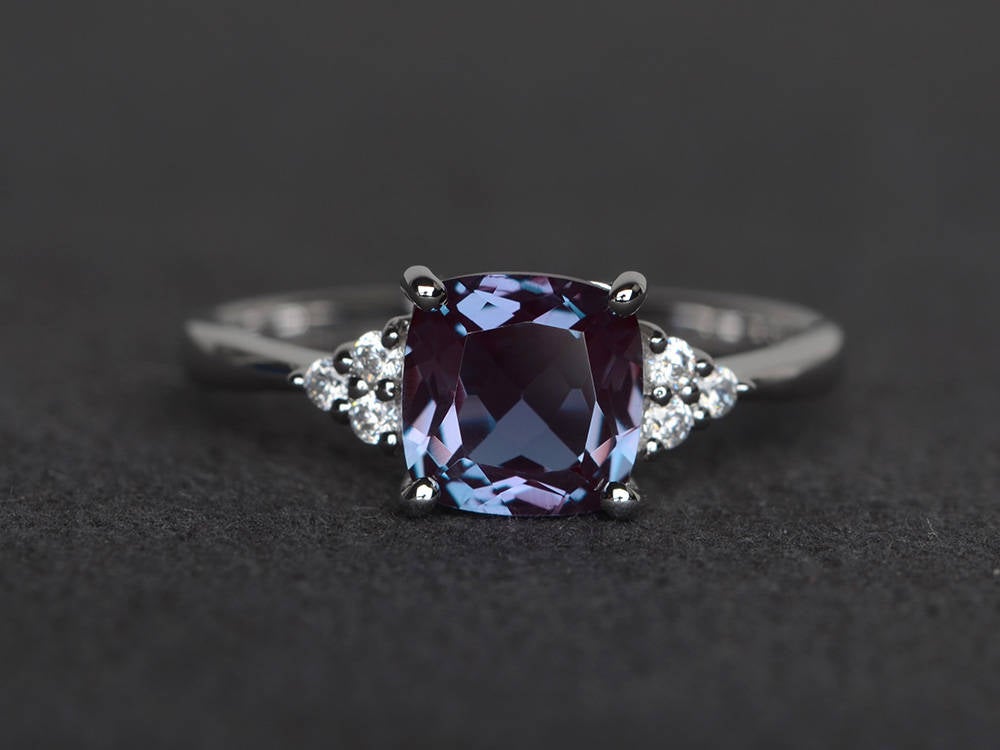
Cushion-cut Alexandrite engagement ring. (Photo by:XiaoCuiJewelry)
It would be my honor. Send me a note here, or email me here, and let’s talk about exactly what you want, and how I can make your dreams come true! I’m also available to answer questions about color change, how to select a stone, how certification works, and what other color change stones there are out there! I love this stuff; drop me a line!
Verifiably Ethical & Sustainable
Guaranteed 1:1 Impact
Personalized 1:1 Customer Service
handcrafted & american-made
you before us, always
Verifiably Ethical & Sustainable
Guaranteed 1:1 Impact
Personalized 1:1 Customer Service
handcrafted & american-made
you before us, always
Thoughtfully crafted, made to last, and designed for life's most meaningful moments. LEARN MORE
Diamonds, Gemstones, & Metals
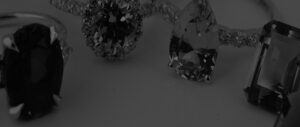
Every piece of Do Amore jewelry begins by not hurting the world. All our natural diamonds are either ethically sourced in Canada, recycled to eliminate additional demand, or accompanied by a blockchain ledger showing every hand your diamond passed through, proving your stone is truly conflict-free.
We also offer sustainable lab-created stones and guarantee all precious metals are recycled to eliminate the environmental impact of mining. Since March 2022, we carry absolutely no Russian diamonds and continue to urge the industry to follow suit.
Clean Water
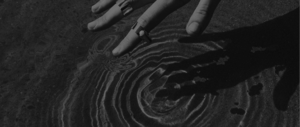
We desire to deepen the well of love in the world. We guarantee that every single purchase—whether engagement ring, wedding band, or piece of jewelry—directly impacts one person’s life by giving them access to clean water.
We do this by directly matching jewelry purchases to people in communities to ensure our funding has a one-to-one impact. We also show you the exact GPS coordinates and a photo of the water well your ring or piece of jewelry helped fund.
Customer Service

As a small, 100% founder- and employee-owned team, one-to-one encounters are at the heart of our values. Whichever way you want support throughout your engagement ring or jewelry purchase process, our team is here to accommodate you.
From high-touch to hands-off, video calls to text messages, you have our dedicated, responsive team on your side from the moment you start your search, to the day your well is built, to the time we meet again.
Engagement Rings, Bands, & Jewelry
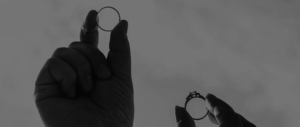
Every Do Amore design, whether one of our own or unique to you, is beautifully handcrafted in America and made specifically for you. Each ring is made to order, every time.
From classic to custom, you have the option to select from dozens of gorgeous settings or work with our design team to create something entirely bespoke. Plus, you are always covered for free inspections, polishing, cleaning, stone tightening, rhodium-plating, and resizing for life.
Our Promise

We care about what matters most to you, not what’s easiest for us. If it’s a minor change to a setting or arriving at a completely custom design, we work to ensure you get precisely what you love.
From statement-making to understated, we have options at any price point. Plus, you always have our team on your side searching to bring you every stone within your specifications. We also offer 60-day returns and a limited lifetime warranty to cover you in the rare event of a manufacturing defect.